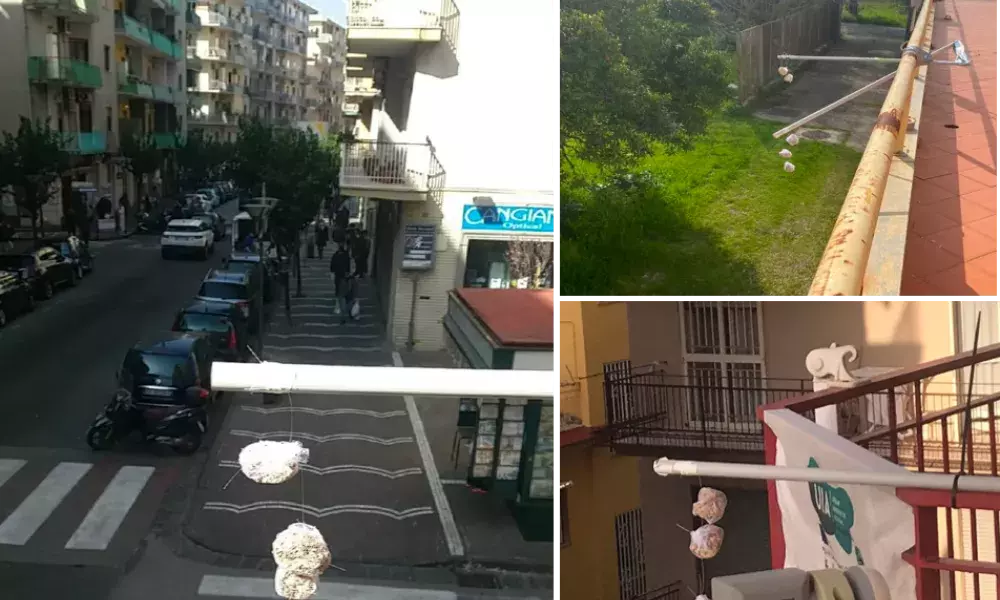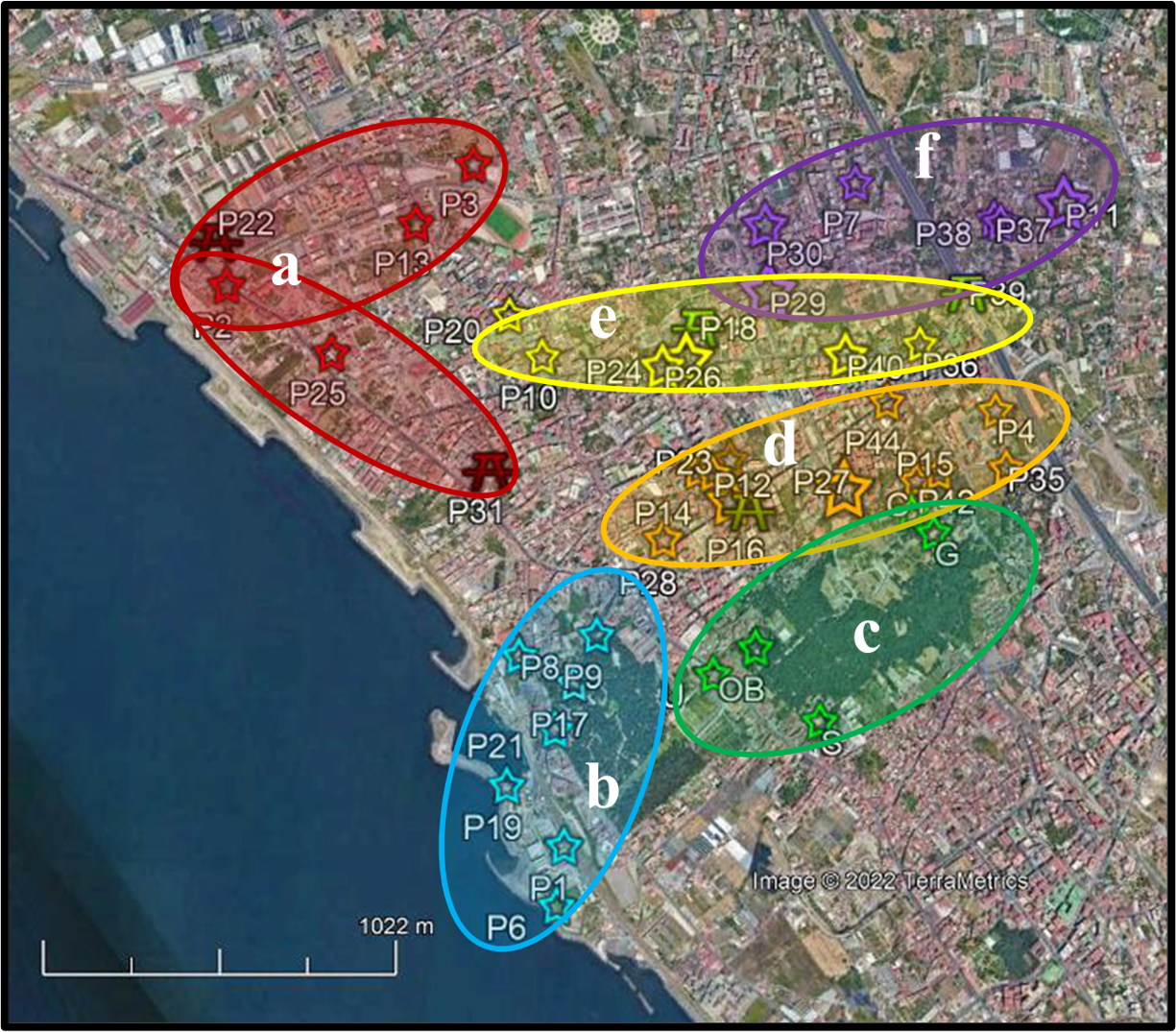
What is biomonitoring and what was done in the City of Portici?
Biomonitoring is a simple, low-cost, and effective method to assess environmental contamination, using organisms. In order to supplement the AIR-HERITAGE monitoring activities, a biomonitoring campaign was launched and implemented, using moss bags to monitor air pollutants, especially particulate matter and heavy metal depositions. The biomonitoring campaign covered various sites in six areas of Portici, representing different realities of the city and took place in two phases in order to study air pollution trends across seasons, in particular during summer and winter time. At each selected site, moss bags were exposed in triplicates, according to set criteria, such as at a height of 4 meters and for a duration of 6 weeks. In addition, moss bags were given to residents to place at their balconies
. 
Results and lessons learnt
In most sites, total heavy metal concentrations were found to be higher in the summer. This is likely to be due to the re-suspension of dust containing heavy metals from roads and soils during the summer months due to the dry weather. Interestingly though, this trend was reversed in five sites, four of which were in the city centre. Fortunately, lead was only detected in small amounts in the majority of sites, most likely due to the ban of the use of lead in vehicles in Italy since 2002. This is good news for the citizens of Portici, as lead is known to cause adverse health effects, especially in children where even low exposure levels can result in behaviour and learning problems, lower IQ and slowed growth.
Other than seasonal variability, the chemical composition of mosses after exposure is now being evaluated in relation to the location of monitoring sites to highlight the natural (e.g., marine aerosols, soil dust, biological activity) and anthropogenic sources (e.g., exhaust and non-exhaust traffic-related emissions), contributing to particulate matter intercepted by mosses.
It should be noted that biomonitoring results cannot be directly compared to ambient air monitoring results, primarily because the former give cumulative results whilst the later give average results in a certain period of time. Nevertheless, as moss bags were placed near fixed and mobile monitoring stations, further analysis will also reveal how biomonitoring and more traditional monitoring techniques correlate.
Ultimately, the results from the biomonitoring campaigns will help further assess air quality across the city, and inform policy making, for example by illustrating whether green spaces improve local air quality and personal exposure to air pollution.
Finally, biomonitoring is one of the few types of monitoring that relies on citizens collaboration. This in turn has helped successfully raise public awareness on air pollution, so that people can be more effectively engaged to become part of the solution.
“One of the main results of the biomonitoring campaign was to involve citizens. We are currently discussing the best way to communicate the results of the research to these citizens. We believe that a good communication is a way to assert the truth and push back against misinformation about air quality and its effects on public health.”
Prof. Paola Adamo, Department of Agricultural Sciences - University of Naples Federico II (UNINA)
About this resource
The Urban Innovative Actions (UIA) is a European Union initiative that provided funding to urban areas across Europe to test new and unproven solutions to urban challenges. The initiative had a total ERDF budget of €372 million for 2014-2020.
Similar content




